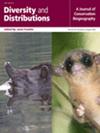Mediterranean Islands as Refugia for Elasmobranch and Threatened Fishes
Abstract
Aim
The Mediterranean Sea is one of the most anthropized seas in the world but also a marine biodiversity hotspot with many fish species under threat. The main goal of the study is to test whether on the heavily fished and anthropized Mediterranean coast, the less impacted Corsica and Balearic Islands, can be considered as refugia for threatened and elasmobranch fishes independently of protection by marine reserves.
Location
The French Mediterranean coast and three north-western Mediterranean islands: Corsica and also Mallorca and Minorca from the Balearic archipelago.
Methods
We performed 187 fish surveys using environmental DNA metabarcoding on three islands and 109 along the continental coast. Of the 78 surveys on islands 22 correspond to no-take marine reserves and of the 109 continental surveys 26 were carried out within reserves. After eDNA filtration, extraction, amplification, and sequencing we estimated the number of fish species but also the number commercial, threatened and elasmobranch fish species on each sample. We then performed an ANOVA by permutation to test the effect of insularity and protection on these four biodiversity metrics. We also modelled these four biodiversity metrics as a function of protection and human pressure but also environmental, habitat and sampling conditions. We also built species accumulation curves to obtain asymptotes representing the potential regional pools for each species category on both island and continental coasts.
Results
We obtained a total of 175,982,610 reads over the 187 eDNA samples that were assigned to 153 fish species including 17 elasmobranch species among which 7 were only detected on islands. We observed a higher total fish richness on continental than island surveys regardless of protection but a higher threatened and elasmobranch fish richness on the island than on continental surveys. We obtained a significant, negative and predominant human gravity impact on the diversity of elasmobranch species. The modelled asymptote reached 148 teleostean fish species on islands and 196 on the continental coastline with a very similar rate of diversity increase with sampling effort but the shape of the species accumulation curves differed markedly for elasmobranchs with a stronger increase in diversity with sampling effort on islands.
Main Conclusions
Our findings highlight that Mediterranean islands can be refugia for sharks and rays but also threatened fishes in this overexploited region. Our results also suggest that reducing or banning trawling activities may play a key role for conserving vulnerable fishes, beyond the benefits of no-take marine reserves, which appear limited on these large home-range species.


 求助内容:
求助内容: 应助结果提醒方式:
应助结果提醒方式:


